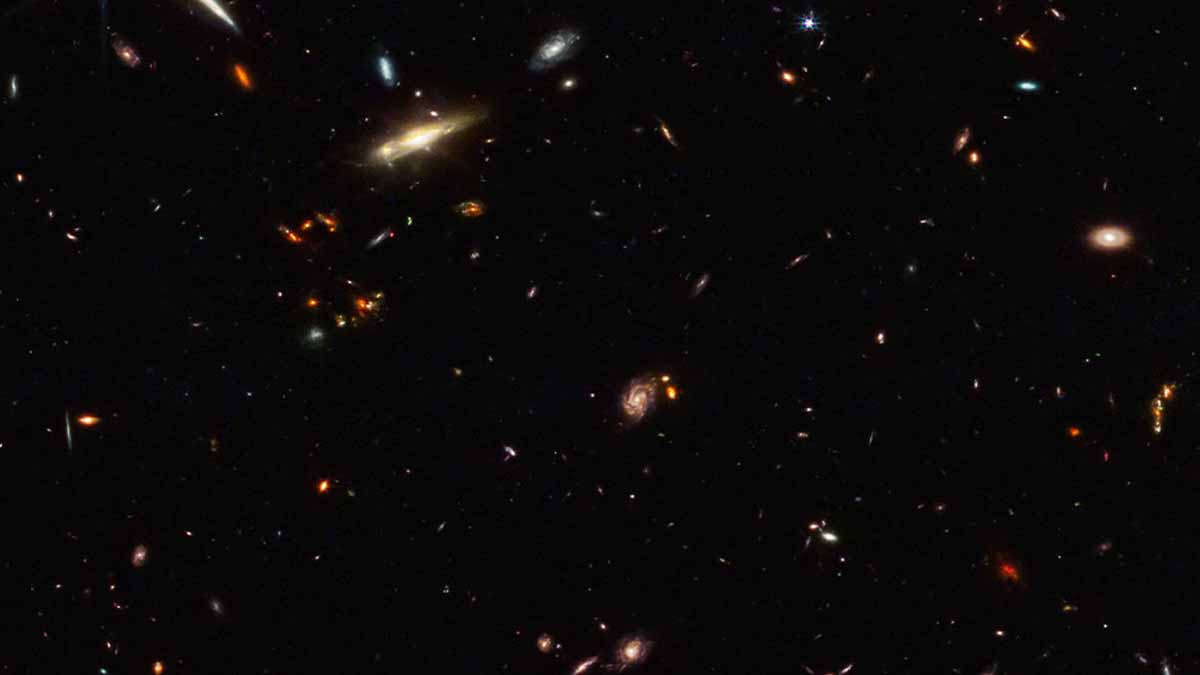A single deep frame, packed with faraway suns and delicate arcs, feels like a time machine. The Webb telescope freezes light that left billions of years ago, so each speck hints at a younger universe and a longer story. The scene looks dense and bright, yet every glow carries clues about growth, gravity, and the hidden matter that binds this vast cosmic web together.
A wide, sharp view from the Webb telescope
The James Webb Space Telescope (JWST) captures a landscape where near and far overlap across cosmic time. A central cluster shines with a white-gold glow that anchors the field. The COSMOS-Web team, led by Dr. Ghassem Gozaliasl at the University of Helsinki, studies this rich core to track how galaxies gather and change. The view blends elegance and complexity, which helps scientists map structure.
Light needs time to travel, so telescopes become windows into the past. A light-year marks the distance light covers in a year, about 5.88 trillion miles or 9.46 trillion kilometers. Webb’s infrared eyes reach faint, redshifted targets that older surveys missed. Hubble and other observatories built the foundation. JWST now extends it, because its detectors probe cooler dust and older starlight hidden from view.
Diverse shapes fill the frame. Spirals reveal arms and bars. Smooth ellipses glow like soft islands. Some galaxies overlap or stretch under gravity. Observing many types in one field lets researchers compare stages of growth. The Webb telescope image turns variety into data, then into timelines that explain how star cities assemble and fade.
Why crowded galaxy groups change shape and share fate
Over half of known galaxies live in groups, so environment matters for their future. Close neighbors tug on one another, and gravity can twist disks, build bridges, or even merge pairs into larger systems. The COSMOS-Web sample suggests long alliances that bent paths and reshaped histories, then sparked fresh star formation. These partnerships changed orbits, gas supply, and the balance of stars and dark matter.
Groups can act like lenses. Their mass bends light from even more distant objects, which magnifies hidden galaxies and sharpens details behind them. Researchers use this lensing to trace where matter sits, including the dark component we cannot see. The maps guide models of how clusters grow, because lensing draws the outline of mass with precision and reach.
Crowded neighborhoods also strip gas. As a galaxy plows through hot plasma, ram pressure sweeps its outer reservoirs. Less gas means fewer new stars and a faster path to old age. Near dense centers, tides pull systems apart or drive head-on hits. These events can light brief starbursts, then leave quenched cores. Local rules decide each fate, while the Webb telescope adds context across time and space.
How multiwavelength clues guide the Webb telescope and new models
Older X-ray missions reveal scorching gas that fills groups, a glow that normal cameras miss. Hubble’s visible and infrared views resolve closer stars and bright galactic centers. Webb detects faint infrared from ancient sources that otherwise slip by. Teams compare all bands to estimate distance, shape, and stellar content, then check colors to infer ages and star-formation rates. The COSMOS-Web team notes that farther systems look redder.
Scale adds power. The program spans about 0.54 square degrees of sky, which covers over twice the area of three full moons placed side by side. A 255-hour campaign with NIRCam feeds studies of galaxy assembly, dark matter, and star formation. Researchers also hunt for galaxies from the epoch of reionization, when early stars stripped electrons from hydrogen and changed how light moved through space.
The picture itself tells a clear story. Thousands of galaxies of many sizes appear, while a few foreground stars show sharp diffraction spikes from within our Milky Way. A cluster of gold-tinted galaxies crowds the center. This survey also tests links between a galaxy’s stellar mass and the mass of its halo. Strong ties would explain stability and where new stars may rise. Shapes vary widely. Spirals, blobs, and overlapping pairs hint at tides, bursts, and long tug-of-war events. Future work will refine distances, star-formation histories, and dark-matter maps, while the Webb telescope inspires models that predict how fast galaxies mature. Results improve because teams blend Webb with Hubble, Chandra, and XMM-Newton, so every mission adds a key piece. Image credit: NASA and ESA.
What this panoramic field suggests about tomorrow’s questions
Fresh data will test which forces dominate at each stage of growth and which patterns repeat across time. The Webb telescope keeps pushing to fainter targets, while joint maps turn shapes into lifelines that stretch across billions of years. Its ability to capture details at such immense distances also challenges earlier theories, forcing scientists to refine how they view the timeline of galaxy formation. Each new frame becomes not only a snapshot but also a clue that redefines the boundaries of cosmic history. The combined view sharpens our sense of origin, change, and structure in the vast web beyond the Milky Way.
